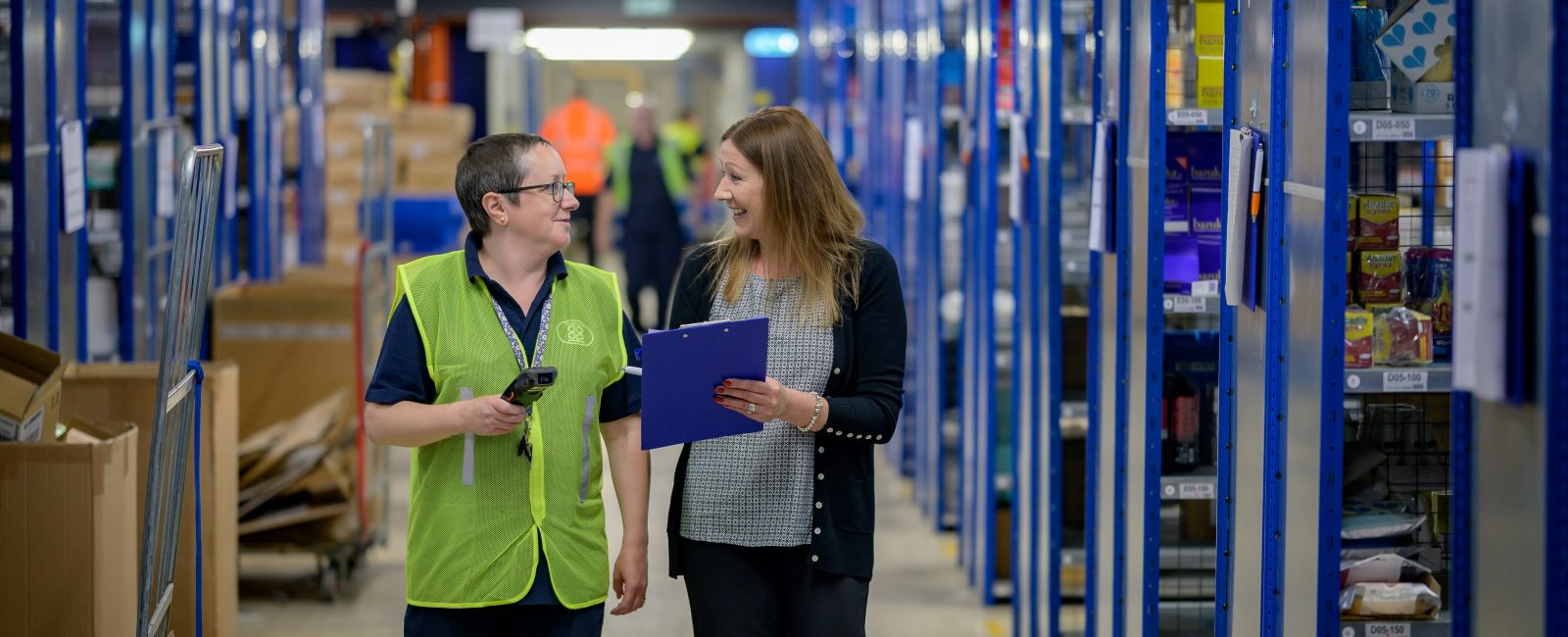
Optimising Warehouse Operations: from Voice Picking and RF Scanning to Pick-To-Light Systems
When assessing the best strategies to enhance warehouse operations, it’s essential to consider the distinct advantages of voice picking, RF scanning, and pick-to-light systems.
Understanding Automated Picking Systems
Each of these automated systems possesses unique features that can streamline processes and enhance the efficiency of warehouse operations.
RF Scanning
RF scanning, or radio frequency scanning, employs wireless handheld devices that facilitate real-time communication between operators and the warehouse management system (WMS). Operators receive instructions on what items to pick, their quantity, and their location. After retrieving the items and scanning their SKU, the system either confirms the pick or alerts the operator of any errors. This continuous feedback loop helps maintain operational flow and minimises picking errors.
Voice Picking
Voice picking systems are designed to optimise efficiency and accuracy with hands-free operation. Operators use headsets to receive voice commands that direct their actions step by step, from picking items to placing them in specific positions on a cart. This method not only speeds up the picking process but also enhances safety, as operators keep their heads up and are more aware of their surroundings.
Pick-To-Light
The pick-to-light system uses light displays attached to storage locations to visually guide operators. When an order is scanned, the corresponding lights change colour, indicating where items should be picked. This system simplifies the picking process by reducing the time spent searching for items and can significantly increase pick accuracy.
Comparing Features and Benefits
Each picking system has its strengths, making it suitable for different operational needs.
- Pick Accuracy and Training Ease
Voice picking often leads to the highest accuracy rates, nearly eliminating human error, as the system confirms each action via voice feedback. Pick-to-light also boasts high accuracy, though slightly lower than voice picking, because it visually guides the operator.
Both systems are relatively easy to learn, with operators typically becoming proficient within hours, which is crucial for warehouses with high employee turnover or seasonal fluctuations.
- Volume and Speed
When it comes to handling large volumes efficiently, voice picking, and pick-to-light systems excel. Voice picking allows operators to use both hands and maintain forward focus, speeding up the process. Pick-to-light minimises the need for operators to search for items, as the visual cues lead directly to the pick location.
Safety and Cost Considerations
Safety is paramount in warehouse operations. Voice picking and pick-to-light systems enhance safety by allowing operators to maintain their focus ahead rather than looking down at devices, thus reducing incidents.
The cost of implementing each system varies. Pick-to-light systems might be more expensive upfront due to the need for extensive setup and hardware. In contrast, voice picking systems generally require less hardware investment, making them cost-effective for operations with fewer SKUs.
Integrating Multiple Picking Systems
While each system offers distinct benefits, integrating two or all three can enhance efficiency depending on the warehouse’s specific needs. Such integration allows for a cohesive operation managed under one software system, adapting to dynamic operational demands and increasing overall productivity.
Choosing the right automated picking system involves balancing various factors, including accuracy, volume, safety, and cost. By understanding the unique capabilities and integration potential of voice picking, RF scanning, and pick-to-light systems, warehouse managers can make informed decisions that align with their operational goals and enhance overall efficiency.












